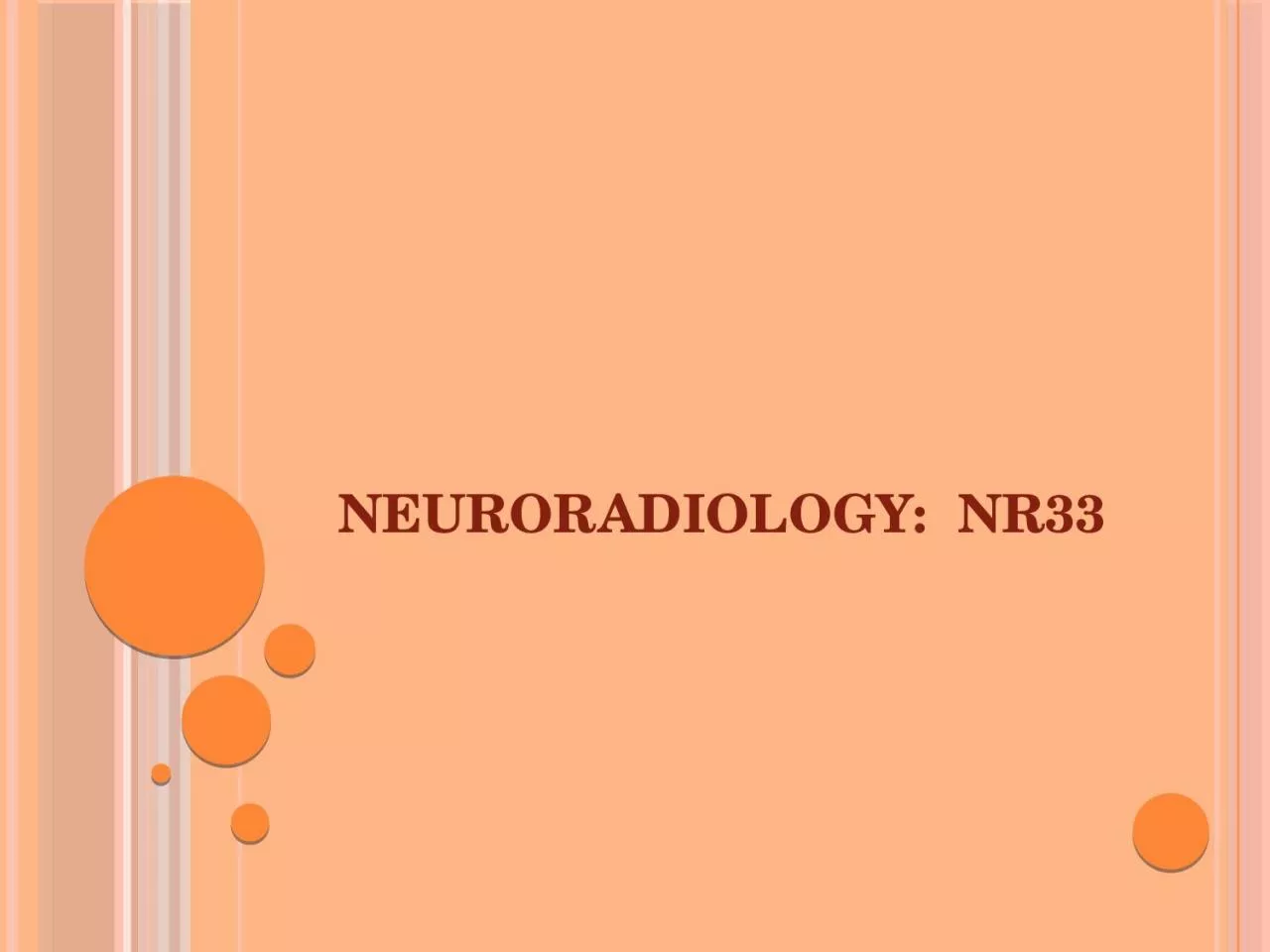

IN ADULT A REPORT CASE L EL ASSASSE S BOUTACHALI T AMIL A HANINE S CHAOUIR A DARBI Radiology service Military hospital Rabat Morocco Introduction Rasmussens encephalitis is a rare chronic inflammatory disease characterized by a focal cortical inflammation with progressive ext ID: 1046958
Download Presentation The PPT/PDF document "NEURORADIOLOGY: NR33 RASMUSSEN'S ENCEPH..." is the property of its rightful owner. Permission is granted to download and print the materials on this web site for personal, non-commercial use only, and to display it on your personal computer provided you do not modify the materials and that you retain all copyright notices contained in the materials. By downloading content from our website, you accept the terms of this agreement.
1. NEURORADIOLOGY: NR33
2. RASMUSSEN'S ENCEPHALITIS IN ADULT: A REPORT CASEL. EL ASSASSE, S. BOUTACHALI, T. AMIL, A. HANINE, S. CHAOUIR, A. DARBI.Radiology service, Military hospital, Rabat, Morocco
3. Introduction:Rasmussen's encephalitis is a rare chronic inflammatory disease characterized by a focal cortical inflammation, with progressive extension and dissemination. It is a disease which primarily interests the child. We report in this work an observation of a case of Rasmussen's encephalitis in adult.
4. Observation:A 30-year-old woman epileptic since 5 years, with drug-resistant partial epilepsy, presented a progressive left hemibody deficit since 1 month. An EEG and MRI were performed.
5. Results:The electroencephalogram showed bihemispheric epileptic abnormalities predominant in right temporal focus. The MRI found a right hemispheric cortical atrophy associated with atrophy of the right basal ganglia and an ipsilateral white matter hyperintensity in T2 and FLAIR. This clinical and radiological presentation allowed the diagnosis of late-onset Rasmussen's encephalitis.
6. Axial T2 and Flair MRI: Right hemispheric cortical atrophy associated with atrophy of the right basal ganglia and an ipsilateral white matter hyperintensity in T2 and FLAIR.
7. Discussion: It is a rare chronic inflammatory disease.Unknown etiology, probably autoimmune.Primarily affects children.Exceptional forms in adolescents or adults have been described.In literature: 2OO cases reported since the first description by Theodore Rasmussen.
8. Discussion: Only 37 cases in adults.Late adult form :Mean age: 24 years.Female predominance.Slower and less severe evolution than in children.
9. Discussion: Clinical presentation:Drug-resistant partial epilepsy.Hemibody neurological deficit.Choreic movement disorders.Visual seizures.Electroencephalogram:Slow activity in one hemisphere.
10. Biology:Anti-Glutamate receptor antibodies type 3 (anti GLUR3): positive.Discussion:
11. MRI:Phase 0: No abnormality.Phase 1: Cortical or white matter hyperintensity on T2 and FLAIR, with increased cortical thickness.Phase 2: T2 or FLAIR hyperintensity without cortical thickness change.Phase 3: T2 or FLAIR hyperintensity with cortical atrophy.Phase 4: cortical atrophy without hyperintensity.Discussion:
12. Contrary to the child, these forms are characterized by :Less frequent neurological deficit.A higher incidence of bilateral or occipital involvement.A slower and less severe evolution than in children.Discussion:
13. Treatment:Antiepileptic drugs.Corticosteroids.IV Ig.Plasmapheresis.Discussion:
14. Early diagnosis of Rasmussen's encephalitis can tailor the treatment, which is essentially medical in adults.conclusion:
15. Jaillon-Rivière V, Dupont S, Bertran F, De la Sayette V, Beuvon F,Baulac M, et al. Le syndrome de Rasmussen à début tardif: caractéristiques cliniques et thérapeutiques. Rev Neurol 2007;163:573-80.Bahi-Buisson N, Nabbout R, Plouin P, Bulteau C, Delalande O,Hertz Pannier L, et al. Avancées actuelles sur les conceptspathogéniques et thérapeutiques de l ’encéphalite de Rasmussen.Rev Neurol 2005;161:395-405.Freeman JM. Rasmussen’s syndrome: progressive autoimmune multi-focal encephalopathy. Pediatr Neurol 2005;32:295—299.Kim SJ, Park YD, Hessler R, Lee MR, Smith JR. Correlation between magnetic resonance imaging and histopathologic grades in Rasmussen’s syndrome. Pediatr Neurol 2010;42:172—6.REFERENCES: